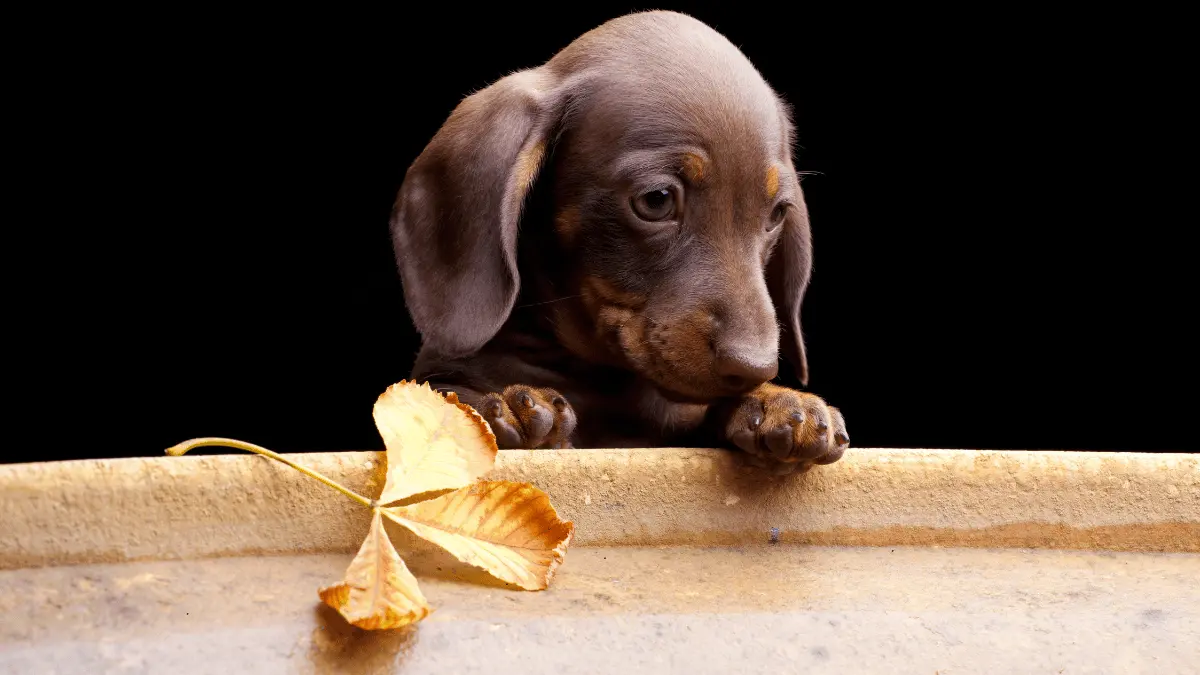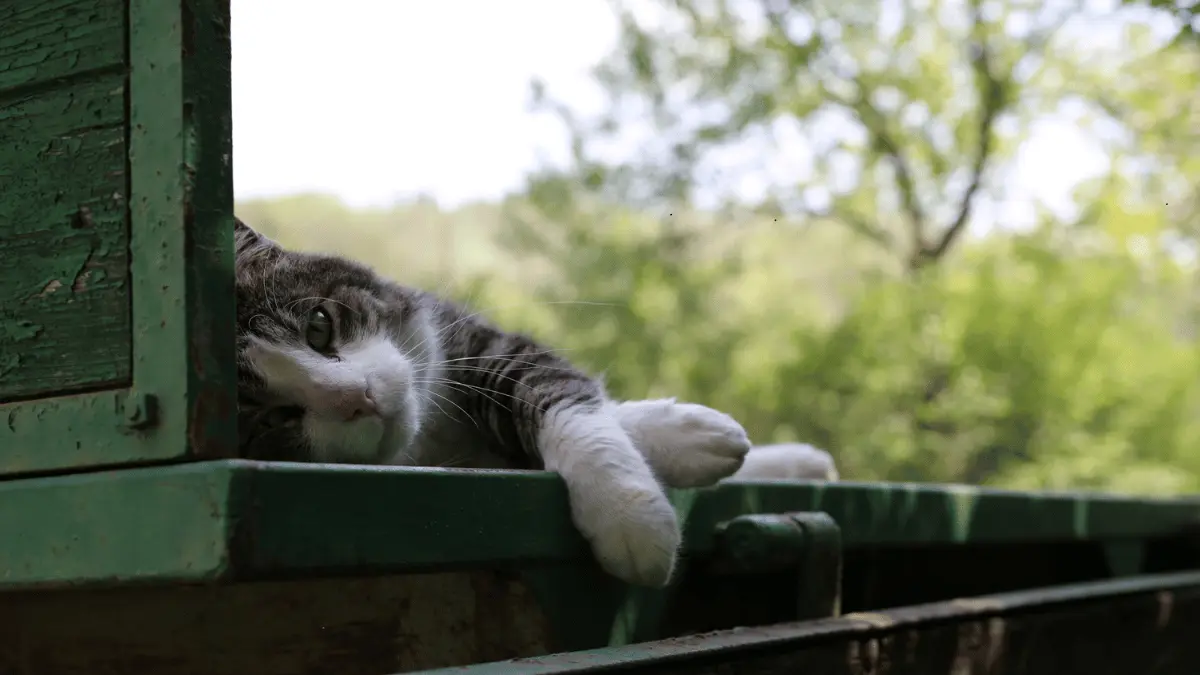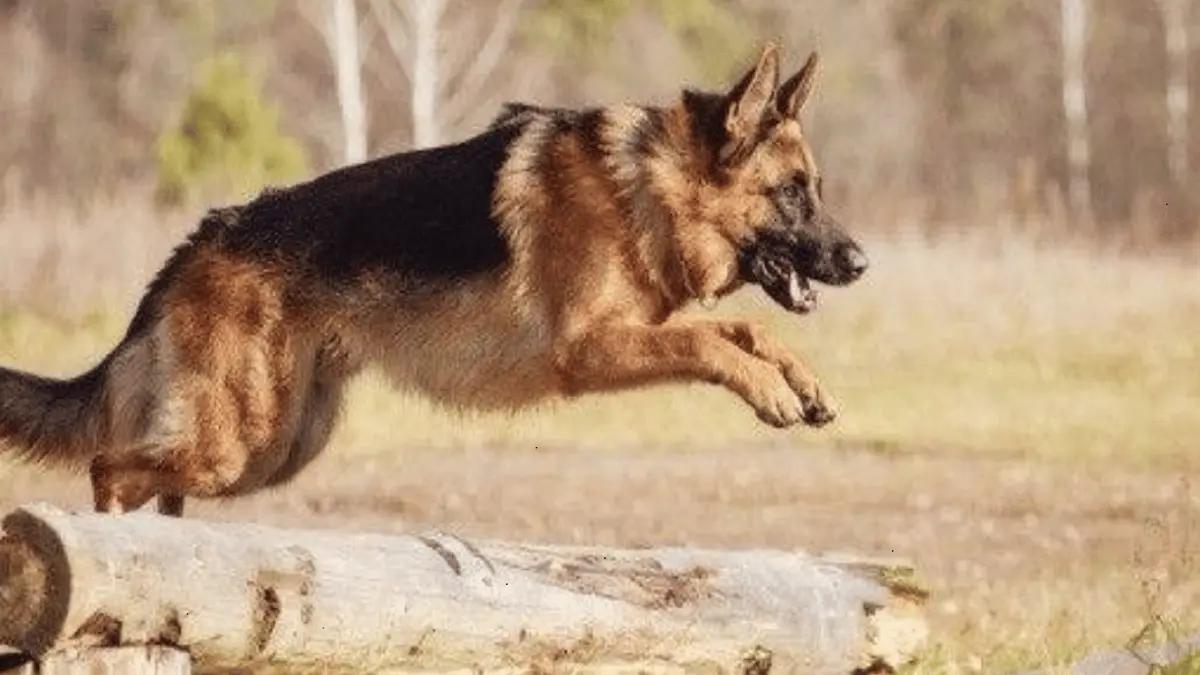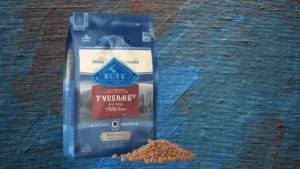The 12 Best Dog Bowls of 2024 for Dachshunds: How to Choose the Right One
By considering the options and factors outlined in this article, you can find the perfect bowl to keep your Dachshunds healthy and happy.
Dachshunds and and Dachshund Mixes are popular for their long, low bodies and aggressive personalities. As a dachshund owner, you want to ensure your furry friend has the best food bowl to meet their needs. But with so many options available, how do you choose the right one?
In this article, we’ve compiled a list of the 12 best dog bowls of 2024 for dachshunds, along with tips on choosing the right one.
Best-Raised Food Bowls for Dachshunds
Dachshunds are a popular breed of dog known for their long bodies and short legs. When it comes to feeding these dogs, many owners wonder if raised bowls are a good idea. Raised bowls are elevated off the ground, usually by a few inches.
Reduce Strain on the Neck and Spine
There are several benefits to using raised bowls for dachshunds. First and foremost, raised bowls can help reduce strain on the dog’s neck and spine. Because dachshunds have such long bodies and short legs, they are prone to back or neck problems. When a dachshund has to strain to reach the ground to eat, this can exacerbate any existing spinal issues.
Improve Digestion
Additionally, raised bowls can help improve digestion in dachshunds. When a dog eats from a raised bowl, it can maintain a more natural posture, with its head and neck in a straight line. This can help prevent gulping and swallowing air, which can lead to digestive issues like bloating.
Prevent the Bowl from Moving
Another benefit of raised bowls for dachshunds is that they can help prevent the bowl from moving around while the dog eats. Dachshunds can be quite enthusiastic eaters, and if their bowl is on the ground, they may push it around or spill food. A raised bowl can be more stable and prevent these issues.
It’s important to note that not all dachshunds will benefit from raised bowls. Some dogs may prefer to eat from a bowl on the ground. Additionally, after consulting a veterinarian, raised bowls should only be used as a solution for dogs with existing digestive or spinal issues.
In conclusion, raised bowls can be a great option for dachshunds. They can help reduce strain on the dog’s neck and spine, improve digestion, and prevent the bowl from moving around during mealtime. However, it’s important to consider each dog’s needs and preferences before deciding whether or not to use a raised bowl.
Top 4 Recommended Raised Bowls for Dachshunds
Raised bowls benefit dachshunds, as they can help reduce the risk of digestive issues and neck and spine strain and allow for a more comfortable feeding experience.
Here are 4 recommended raised bowls for dachshunds:
PetFusion Elevated Dog Bowls:
This raised bowl is made of high-quality bamboo and has two stainless steel bowls. It has a sleek and modern design that will fit well in any home decor. The bowl’s height is adjustable, allowing for a customizable feeding experience. The price ranges from $39.95 to $59.95.
FOREYY Raised Pet Bowls for Small and Medium Dogs:
This raised bowl is made of natural bamboo and features two stainless steel bowls that are easy to clean. The elevated design promotes good posture and digestion. The price for this bowl ranges from $23.99 to $26.99.
Pet Zone Designer Diner Adjustable Elevated Pet Feeder:
This raised bowl is made of sturdy plastic and has two stainless steel bowls. The height is adjustable, and the legs are detachable for easy storage. It has a unique design that will add some style to your home. The price for this bowl ranges from $26.95 to $49.99.
NMN Products Raised Dog Bowls:
This raised bowl is made of high-quality wood and features two stainless steel bowls. The elegant design will complement any home decor. The bowl’s height is adjustable, and the legs are removable for easy storage. The price ranges from $44.99 to $59.99.
These raised bowls provide the benefits of elevated feeding and are designed specifically for small dogs like dachshunds. The prices vary depending on the materials used, the design, and the adjustability of the bowl. Choosing the right raised bowl for your dachshund can help promote their overall health and make mealtime more comfortable.
Best Slow Feeder Food Bowls for Dachshunds
Slow-feeder bowls are specially designed to help dogs eat slower and can be highly beneficial for dachshunds. These bowls have ridges, bumps, or other barriers that force your dog to work harder to access its food, which slows down its eating.
Prevent Digestive Issues
There are several benefits to using a slow feeder bowl for dachshunds. One of the main benefits is that it can help prevent digestive issues. Dachshunds are prone to developing bloating, gas, and other digestive problems, which can be exacerbated by eating too quickly. Using a slow feeder bowl will force your dachshund to eat at a slower pace, which can help reduce the risk of digestive issues.
Prevent Obesity
Another benefit of using a slow feeder bowl is that it can help prevent obesity. Dachshunds are also prone to gaining weight, and eating too quickly can contribute to this problem. By slowing down their eating, a slow feeder bowl can help your dachshund feel full faster and eat less overall, leading to a healthier weight.
Prevent Boredom
A slow feeder bowl can also provide mental stimulation and help prevent boredom. Dachshunds are intelligent and active dogs that need plenty of mental and physical stimulation to stay happy and healthy. By making mealtime more challenging and engaging, a slow feeder bowl can provide your dachshund with additional mental stimulation.
Overall, slow feeder bowls can be an excellent tool for dachshund owners who want to promote healthy eating habits and prevent digestive issues, obesity, and boredom.
Top 4 Recommended Slow Feeder Bowls for Dachshunds
Slow feeder bowls can help improve your dachshund’s digestion and reduce the risk of health problems caused by eating too quickly. Here are the top 4 recommended slow feeder bowls for dachshunds, including features and prices:
Outward Hound Fun Feeder Slo-Bowl:
This bowl’s unique maze-like design helps slow your dog’s eating speed. It’s made of food-safe, BPA-free materials and is dishwasher safe—price: $10-$15.
Dogit Slow Feeder Dog Bowl:
This bowl has a non-slip base and a maze-like design to promote slower eating. It’s made of food-safe, eco-friendly materials and is easy to clean—Price: $8-$10.
JW Pet Skidstop Slow Feed Bowl:
This bowl has a rubber base to prevent slipping and tipping and features raised ridges to promote slower eating. It’s made of durable, dishwasher-safe plastic—price: $5-$7.
PetSafe Healthy Pet Simply Feed Automatic Feeder:
This feeder has programmable meal times and portion sizes and comes with a stainless steel slow feed bowl. It’s ideal for dachshunds who need smaller, more frequent meals—price: $100-$150.
Using a slow feeder bowl can help ensure that your dachshund eats at a healthy pace, which can improve digestion and prevent health problems caused by eating too quickly.
Best Dog Bowls for Miniature Dachshunds
Miniature dachshunds have unique needs when it comes to food bowls due to their smaller size and long body shape. These dogs are prone to developing back problems and spinal injuries, so taking precautions to protect their spine when they eat is essential. Miniature dachshunds require smaller food bowls that are low to the ground and placed at a comfortable height for them to reach easily.
Long Body
Additionally, the shape of the bowl is essential. Miniature dachshunds have long bodies, making it challenging to reach the bottom of deep bowls, causing unnecessary strain on their necks and backs. Therefore, it’s best to choose food bowls that are shallow and wide, allowing them to access their food without any discomfort.
Materials
It’s also crucial to consider the material of the food bowl. Some materials, such as plastic, can irritate the sensitive skin on the chin and cause acne. Stainless steel and ceramic are excellent options for miniature dachshunds as they are durable and easy to clean.
Overall, it’s important to choose a food bowl that meets the unique needs of miniature dachshunds, such as small size, shallow and wide shape, and suitable material to prevent discomfort or health issues.
Top 4 Recommended Bowls for Miniature Dachshunds
Miniature dachshunds require bowls that are appropriately sized and shaped for their smaller frame, with a shallow depth to prevent strain on their backs. Here are four recommended bowls for miniature dachshunds:
Outward Hound Fun Feeder Slo-Bowl:
This slow feeder bowl promotes healthy eating habits by slowing down eating and preventing gulping. Its unique maze design provides a fun and interactive feeding experience for dogs. It is made of durable, food-safe materials and is dishwasher safe—price range: $10-$15.
Loving Pets Bella Bowls:
These stainless steel bowls come in various sizes, including a small size perfect for miniature dachshunds. They are rust, scratch, and odor resistant, and the removable rubber base prevents skidding and noise—price range: $5-$10.
Petmate Replendish Gravity Waterer:
This automatic water dispenser ensures that your miniature dachshund can always access fresh water. The gravity flow design keeps the water level consistent, and the micro ban antimicrobial protection helps prevent the growth of bacteria. It is available in a 0.5-gallon size, perfect for small dogs—$15-$20.
Ethical Pet Stoneware Crock Dish:
This heavy-duty ceramic bowl is both dishwasher and microwave safe. Its heavyweight design ensures stability while your miniature dachshund is eating or drinking. It comes in various sizes, including a 4.5-inch size perfect for miniature dachshunds—price range: $5-$10.
Can’t You Use a Normal Food Bowl or a Plate?
Dachshunds are a unique breed that requires special attention regarding their feeding routine. While many pet owners might assume that a regular bowl or plate would suffice, there may be better choices for dachshunds. Here are a few reasons why:
Neck Strain:
Dachshunds have a long and narrow body shape, which can put extra strain on their necks when they have to bend down to eat or drink from a bowl placed on the ground. This can lead to discomfort, pain, and even spinal problems over time.
Indigestion:
Eating too quickly or swallowing food can lead to dachshunds’ indigestion and other digestive problems. Regular bowls or plates may not encourage slower eating habits, which can harm the dog’s health.
Messy Eating:
Dachshunds have long and floppy ears that can easily dip into their food and water bowls while eating, leading to messy and unhygienic eating habits. Additionally, regular bowls or plates can be easily tipped over, leading to spills and wastage.
To address these issues, it is recommended that dachshunds use raised or slow feeder bowls that are specifically designed to meet their unique needs. These types of bowls can help reduce neck strain, encourage slower eating habits, and minimize messiness during meal times.
Overall, there may be better choices than using a regular bowl or plate for dachshunds, and it is important to consider their specific needs when selecting a feeding solution. By investing in the right type of bowl, pet owners can help promote the health and well-being of their furry friends.
Tips for Choosing the Right Bowl for Your Dachshund
Dachshunds have unique needs when it comes to choosing the right food bowl. Here are some tips to help you make the best choice for your furry friend:
Size and Height:
Make sure to choose a bowl that is appropriate for your dachshund’s breed and size. Also, consider a raised bowl to provide more comfortable feeding and prevent neck and back strain.
Material:
Choose a bowl of safe and non-toxic stainless steel or ceramic materials. Avoid plastic bowls, as they can harbor bacteria and cause allergic reactions.
Ease of Cleaning:
Look for a bowl that is easy to clean and dishwasher safe. This will help keep your dachshund bowl clean and prevent the growth of harmful bacteria.
Slow Feeder Bowls:
If your dachshund eats too quickly, consider using a slow feeder bowl to encourage them to eat slower and prevent digestive issues.
Non-Slip Base:
Look for a bowl with a non-slip base to prevent the bowl from sliding around while your dachshund eats.
Multiple Bowls:
Consider purchasing multiple bowls for your dachshund, so you always have a clean bowl available for your next meal.
Following these tips, you can choose the right bowl for your dachshund that is safe, comfortable, and encourages healthy eating habits.
FAQs
Dachshunds are unique dogs with specific needs, including when it comes to their food bowls. Here are some common questions about dachshund food bowls and their answers:
Why do dachshunds need special food bowls?
Dachshunds have long, narrow bodies and short legs, making reaching down to eat from a bowl on the floor difficult. Using raised bowls can help make feeding easier for them. Additionally, dachshunds are prone to spinal problems, and using a raised or slow feeder bowl can help prevent them from straining their necks or backs while eating.
What are the benefits of slow feeder bowls for dachshunds?
Slow feeder bowls can help prevent dachshunds from eating too quickly, leading to digestive problems like bloat or vomiting. These bowls have ridges or obstacles that slow eating, encouraging dogs to chew their food more thoroughly.
What are some features to look for when choosing a food bowl for a dachshund?
When choosing a food bowl for your dachshund, consider their unique needs. Look for bowls that are the right height for your dog’s size, with a non-slip base to prevent sliding. Raised bowls can be beneficial for dachshunds, as can slow feeder bowls. Stainless steel or ceramic bowls are good options, as they are easy to clean and won’t harbor bacteria.
How do I clean my dachshund’s food bowl?
It’s important to clean your dachshund’s food bowl regularly to prevent bacteria buildup. Stainless steel or ceramic bowls can be washed in the dishwasher or with hot, soapy water. Avoid harsh chemicals or abrasive sponges that could damage the bowl’s surface. Rinse the bowl thoroughly before allowing your dachshund to eat from it again.
In conclusion, choosing the right food bowl for your dachshund can help prevent digestive issues and make feeding easier and more comfortable for your furry friend. Consider their unique needs and look for bowls with raised or slow feeder designs, non-slip bases, and easy-to-clean materials like stainless steel or ceramic.
What to Look for in a Dog Bowl for Dachshunds?
As a dachshund owner, choosing the right bowl for your furry friend is important for their health and comfort during mealtime. Here are some things to look for when selecting a dog bowl for your dachshund:
Size:
Dachshunds are small dogs, so a too-large bowl may be difficult for them to eat comfortably. Look for bowls appropriately sized for your dachshund’s breed and weight.
Material:
The bowl’s material can affect how durable and easy it is to clean. Stainless steel and ceramic bowls are popular choices because they are easy to clean and don’t harbor bacteria like plastic bowls can.
Shape:
Dachshunds have a unique body shape with a long, narrow body and short legs. A bowl with a raised or tilted design can make it easier for them to access their food and water without straining their necks or backs.
Non-Skid Base:
Dachshunds are known for being energetic and playful, so a non-skid base can prevent the bowl from tipping over and spilling food or water on the floor.
Special Features:
Special features like slow feeder bowls or elevated bowls may be beneficial for dachshunds with unique needs, such as those who eat too quickly or have trouble digesting food.
Ease of Cleaning:
Choosing a bowl that is easy to clean is important to prevent bacteria buildup and ensure your dachshund’s food and water are safe. Look for bowls that are dishwasher safe or have a smooth, easy-to-clean surface.
Price:
Dog bowls can range in price from very affordable to quite expensive. While price is an important consideration, focusing on quality and features that will benefit your dachshund is also important.
By considering these factors, you can choose a bowl that is comfortable for your dachshund to use and promotes their health and well-being.
Tips on How to Choose the Right Bowl for Your Dachshund’s Specific Needs
With their long bodies and short legs, Dachshunds have specific needs regarding their food and water bowls. Choosing the right bowl for your dachshund can help promote healthy eating habits, reduce the risk of health issues, and improve overall mealtime comfort. Here are some tips on how to choose the right bowl for your dachshund’s specific needs:
Consider the Size:
Dachshunds come in a variety of sizes, from miniature to standard. Choosing a bowl that is the right size for your dachshund is important for comfort and portion control. A bowl that is too small can lead to frustration and discomfort, while a bowl that is too large can encourage overeating.
Look for Raised Bowls:
Raised bowls are a great option for dachshunds as they can help reduce their neck and back strain when eating or drinking. This is especially important for older dachshunds who may have mobility issues.
Opt for Non-Slip:
Dachshunds are prone to slipping on smooth surfaces, which can cause spills and messes during mealtime. Choosing a non-slip bowl can help keep your dachshund’s mealtime area clean and reduce the risk of injury.
Choose Easy-to-Clean Materials:
Food and water bowls can become a breeding ground for bacteria if not cleaned properly. Choosing bowls made of easy-to-clean materials like stainless steel or ceramic can help ensure your dachshund’s mealtime area stays hygienic.
Consider Special Features:
Slow feeder bowls can help reduce the risk of bloat and other digestive issues in dachshunds who eat too quickly. Additionally, bowls with ridges or patterns can help promote dental health by scraping away plaque and tartar.
Considering these factors, you can choose the right bowl for your dachshund’s specific needs and help promote a healthy and comfortable mealtime experience.
Expert Advice for Dachshund
If you’re a proud owner of a Dachshund, then it’s crucial to understand the unique needs and care requirements of this breed. As an expert in the field, I highly recommend several essential tips to keep your furry friend healthy and happy. Firstly, Dachshunds are prone to back problems, and keeping them at a healthy weight and avoiding activities that strain their backs is critical. Secondly, these dogs are highly active and require regular exercise and mental stimulation to prevent boredom and destructive behavior. Providing them with interactive toys, puzzles, and games can help keep their minds sharp. Thirdly, early and consistent training is crucial to ensure your Dachshund is well-behaved and obedient. Finally, regular veterinary check-ups and a nutritious diet are crucial for maintaining your Dachshund’s health. By following this expert advice for Dachshund, you can ensure that your furry friend remains healthy and happy for years to come.
Assessing the Risk and Benefits of the Leptospirosis Vaccine for Dachshunds
Assessing the Risk and Benefits of the Leptospirosis Vaccine for Dachshunds – Leptospirosis is a bacterial infection that can affect both humans and dogs, including Dachshunds. While the vaccine for Leptospirosis is recommended by many veterinarians, there are some potential risks involved. Some Dachshunds may experience adverse reactions to the vaccine, such as allergic reactions or autoimmune disorders. However, the benefits of protecting your dog from Leptospirosis outweigh the risks. The vaccine can prevent a potentially fatal infection, and by taking precautions such as checking the vaccine’s ingredients and monitoring your dog’s reaction after vaccination, you can minimize the risk of adverse reactions.
Raw Feeding Tips and Tricks for Dachshunds
Raw Feeding Tips and Tricks for Dachshunds – Dachshunds can benefit from a raw diet, but it’s essential to ensure that they receive all the necessary nutrients. When feeding your Dachshund a raw diet, it’s crucial to provide a variety of proteins, such as beef, chicken, and fish, to ensure that they receive a complete range of amino acids. Additionally, it’s essential to include calcium and phosphorus sources, such as bones or supplements, to support your Dachshund’s bone health. To prevent bacterial contamination, it’s crucial to handle raw meat safely and keep your dog’s feeding area clean. Always consult with a veterinarian or a canine nutritionist to ensure that your Dachshund’s raw diet is balanced and meets their nutritional needs.
Where to Find Wire Haired Dachshunds for Sale
Where to Find Wire Haired Dachshunds for Sale – If you’re looking to buy a Wire Haired Dachshund, the best place to start is with a reputable breeder. You can find a list of breeders through the American Kennel Club or the Wire Haired Dachshund Club. It’s essential to research the breeder thoroughly and ask for references from previous clients. A reputable breeder should be willing to provide you with health certificates for the parents and puppies, as well as answer any questions you may have about the breed. Additionally, you may find Wire Haired Dachshunds available for adoption through breed-specific rescues or animal shelters.
Understanding Dots and Spots in Dachshunds: Causes and Implications
Understanding Dots and Spots in Dachshunds: Causes and Implications – Dachshunds can have a variety of dots and spots on their coat, which can be caused by genetics or skin conditions. One of the most common types of dots and spots on Dachshunds is called “dapple,” which is a result of a genetic mutation. Dapple Dachshunds have a unique and striking coat pattern with lighter spots on a darker base. Other dots and spots on a Dachshund’s coat can be caused by skin conditions such as alopecia or dermatitis. If you notice any changes in your Dachshund’s skin or coat, it’s essential to consult with your veterinarian to rule out any underlying health issues.
The Heat Cycle of Dachshunds: Duration and Behavior Changes
The Heat Cycle of Dachshunds: Duration and Behavior Changes – Dachshunds typically go into heat twice a year, with each heat cycle lasting approximately three weeks. The first week is known as proestrus, during which time the female dog will have a bloody discharge and may display behavioral changes. The second week, called estrus, is when the female dog is most fertile and receptive to male dogs. The third week is called diestrus, during which time the female dog’s reproductive cycle winds down. It’s essential to keep female Dachshunds indoors or in a secure area during their heat cycle to prevent unwanted breeding and protect them from other dogs. Spaying your Dachshund can eliminate the heat cycle and reduce the risk of health issues such as mammary tumors.
Weighing the Pros and Cons of Neutering Your Dachshund
Weighing the Pros and Cons of Neutering Your Dachshund – Neutering is a surgical procedure that removes the testicles of male dogs, including Dachshunds. The procedure has several benefits, such as reducing the risk of testicular cancer and certain behavioral problems. Neutering can also help prevent unwanted litters and decrease aggression. However, there are also some potential downsides, such as the risk of surgical complications and the possibility of weight gain. It’s important to discuss the pros and cons with your veterinarian to make an informed decision about whether or not to neuter your Dachshund.
Corgi Dachshund Mix Health Issues: Risks and Prevention
Corgi Dachshund Mix Health Issues: Risks and Prevention – The Corgi Dachshund mix, also known as the Dorgi, is a hybrid breed that can inherit health problems from both parent breeds. Some of the potential health issues include intervertebral disc disease (IVDD), hip dysplasia, and eye problems such as progressive retinal atrophy (PRA). It’s crucial to research both parent breeds and their health issues before getting a Dorgi to understand the potential risks and ensure you are prepared to provide the necessary care and treatment.
Uncovering the Differences Between Dapple and Double Dapple Dachshunds
Uncovering the Differences Between Dapple and Double Dapple Dachshunds – Dapple Dachshunds have a unique coat pattern that includes spots or blotches of dark color on a lighter base color. Double dapple Dachshunds, on the other hand, have a white coat with patches of darker color. While the dapple pattern is considered desirable, double dapple Dachshunds are prone to health issues such as deafness, blindness, and other congenital defects. It’s important to be aware of these potential risks and only adopt from reputable breeders who prioritize the health and well-being of their dogs.
Exploring the Personality Traits of Dachshund Chihuahua Mixes
Exploring the Personality Traits of Dachshund Chihuahua Mixes – The Dachshund Chihuahua mix, also known as the Chiweenie, is a hybrid breed that combines the playful personality of the Chihuahua with the affectionate and loyal nature of the Dachshund. These dogs can be highly energetic and require regular exercise and mental stimulation to prevent boredom and destructive behavior. Chiweenies are also known for their strong attachment to their owners and can be protective of their family.
The Fascinating Pros and Cons of Dachshund Ownership
The Fascinating Pros and Cons of Dachshund Ownership – Dachshunds are a beloved breed known for their playful personalities, loyalty, and unique appearance. However, there are also some potential drawbacks to owning a Dachshund, such as their tendency to develop certain health issues such as IVDD and their stubborn nature, which can make training a challenge. Additionally, Dachshunds require regular exercise and mental stimulation to prevent boredom and destructive behavior. Ultimately, whether or not a Dachshund is the right breed for you depends on your lifestyle, preferences, and willingness to provide the necessary care and attention.
Is Your Long Haired Dachshund Overweight? How to Tell and What to Do
Is Your Long Haired Dachshund Overweight? How to Tell and What to Do – Maintaining a healthy weight is important for all dogs, including Long Haired Dachshunds. Signs that your Doxie may be overweight include a lack of visible waistline, difficulty feeling their ribs, and reduced activity levels. To help your Dachshund maintain a healthy weight, it’s important to feed them a balanced diet, provide regular exercise, and monitor their weight regularly. Your veterinarian can also provide guidance on maintaining your Dachshund’s health and weight.
Conclusion:
Choosing the right food bowl for your dachshund can greatly affect their comfort and well-being. By considering the options and factors outlined in this article, you can find the perfect bowl to keep your Dachshunds healthy and happy.















